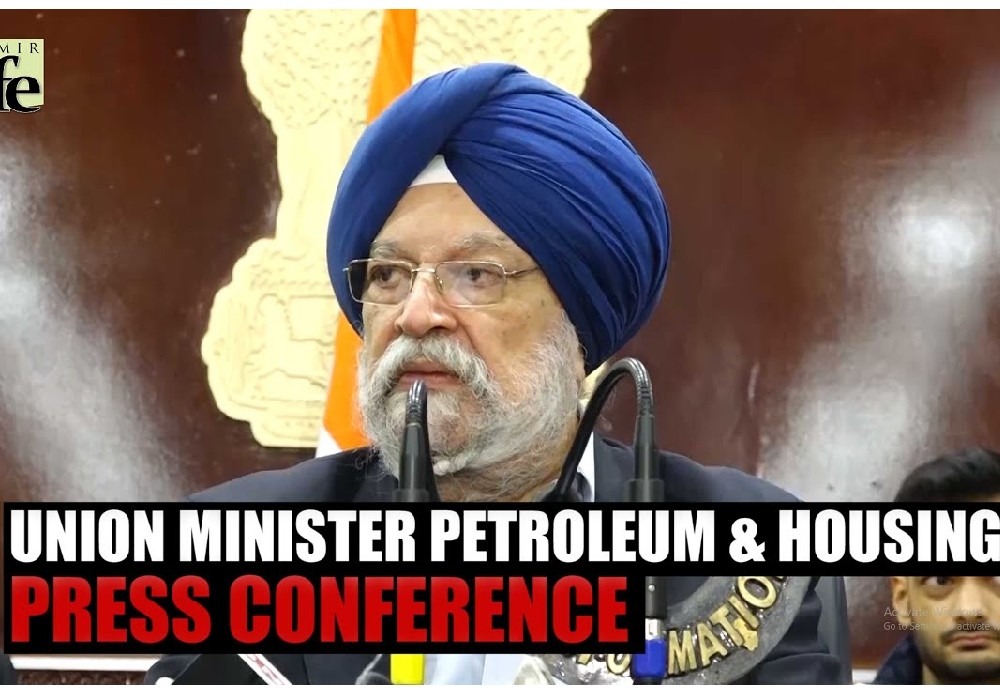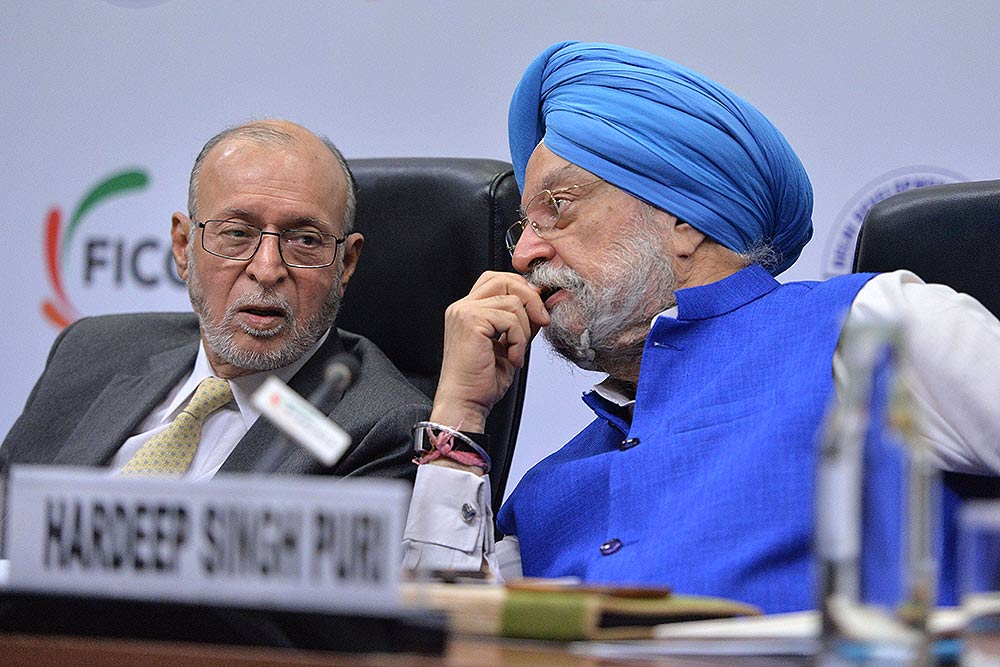India's four-plank energy security strategy revolves around diversifying sources of supplies, a renewed focus on finding and producing more oil and gas domestically, switching to alternate energy sources and using gas and green hydrogen as a pathway to the energy transition, Oil Minister Hardeep Singh Puri said.
While the nation is dependent on imports to meet 85 per cent of its oil needs and 50 per cent of its natural gas requirements, India is mixing ethanol extracted from sugarcane and other agri produce in petrol to cut overseas reliance.
It will achieve 20 per cent ethanol blending in petrol by 2025, Puri said.
"India has been able to navigate through the most formidable energy crisis the world has seen since the 1973 oil crisis thanks to its four-pronged energy security strategy -- diversification of energy supplies, increasing exploration and production footprint, using alternate energy sources, and meeting energy transition through the gas-based economy, green hydrogen and EVs," he said.
India increased the number of its crude oil suppliers from 27 countries in 2006-07 to 39 in 2021-22, adding new suppliers like Columbia, Russia, Libya, Gabon and Equatorial Guinea etc.
Crude oil extracted from below the earth's surface is refined to produce fuels like petrol and diesel. Natural gas too is found below the surface and is used to generate electricity, make fertilizer and convert into CNG to run automobiles and piped to homes for cooking purposes.
Energy prices globally shot up following Russia's invasion of Ukraine but consumers in India were largely insulated as state-owned retailers did not raise prices commensurate with the spurt.
Prices of diesel -- the most used fuel in the country -- rose by only 3 per cent between December 2021 and December 2022 while they went up by 34 per cent in the US, 36 per cent in Canada, 25 per cent in Spain and 10 per cent in the UK, Puri said.
Diesel prices increased from Rs 86.67 per litre in December 2021 to Rs 89.62 a year later. Rates of petrol rose from Rs 95.41 per litre to Rs 96.72.
The increase was tempered by a cut in excise duty. The government had raised the excise duty on petrol by Rs 13 a litre and that on diesel by Rs 15 per litre in 2020 when the pandemic had battered global energy prices. This hike was rollbacked in two instalments in November 2021 and May 2022.
Also, some states cut VAT or local sales tax on fuel to help consumers.
Puri said the government is targeting to increase India's exploration acreage to 0.5 million square kilometres by 2025 and 1 million sq km by 2030.
Exploration over a wider area will yield more discoveries, raising domestic oil and gas output and cutting reliance on imports.
Also, India increased the ethanol blending in petrol from 1.53 per cent in 2013-14 to 10.17 per cent in 2022 and advanced its target to achieve 20 per cent ethanol blending in petrol from 2030 to 2025-26.
The phased rollout of E20 will commence on April 1, 2023, he said.
Simultaneously, the government is supplementing supplies by setting up compressed biogas (CBG) plants that use animal and agri waste to produce gas.
And for making India a hub for the production of green hydrogen - the fuel of the future which has zero carbon footprint - an incentive of Rs 19,744 crore under the National Green Hydrogen Mission has been announced, he said, adding the target is to produce at least 5 million tonnes per annum of green hydrogen by 2030.
Towards energy transition, fuel retailers are setting up alternate energy sources such as EV charging, CNG and LPG at 22,000 petrol pumps by May 2024, he added.

देश में एक करोड़ यात्री प्रतिदिन कर रहे हैं मेट्रो की सवारी: पुरी ..

Union Minister for Petroleum and Natural Gas and Housing and Urban Affairs, Hardeep Singh Puri addressing a press conference in ..

Joint Press Conference by Shri Hardeep Singh Puri & Dr Sudhanshu Trivedi at BJP HQ| LIVE | ISM MEDIA ..
(3).jpg)
"I wish a speedy recovery to former Prime Minister Dr Manmohan Singh Ji. God grant him good health," Puri wrote. ..